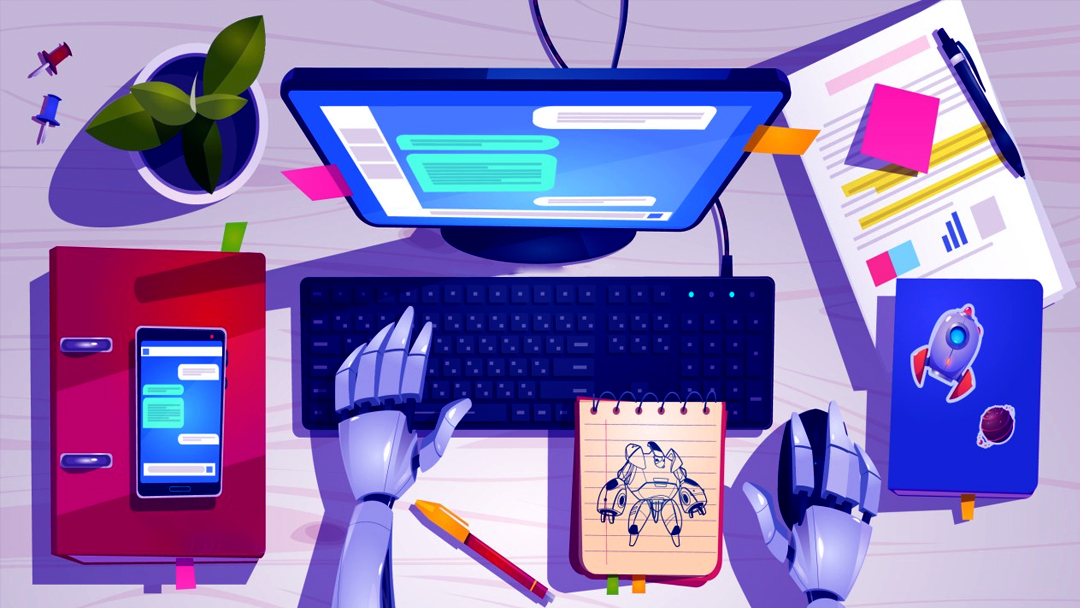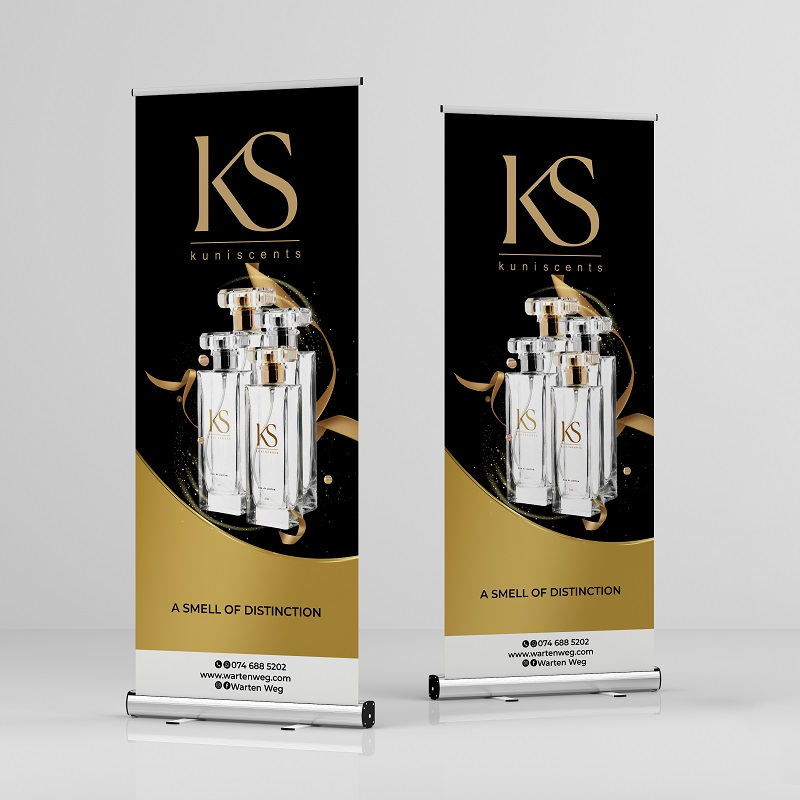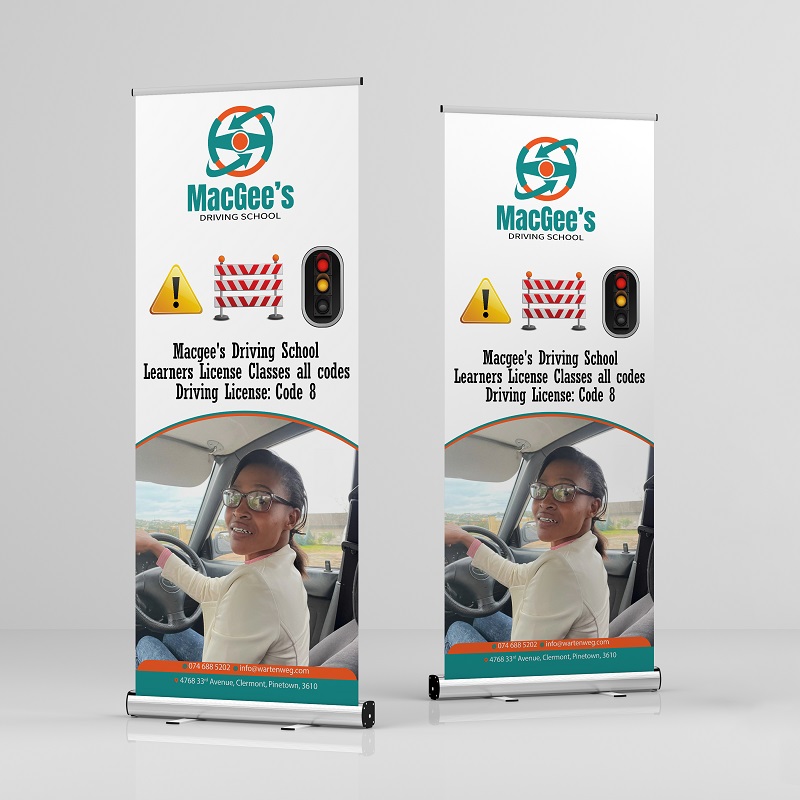Artificial Intelligence in Graphic Design
In the dynamic realm of creative design, the fusion of Artificial Intelligence in graphic design marks a transformative era, propelling the industry into uncharted territories. AI, the simulation of human intelligence in machines programmed to think and learn, has seamlessly integrated into the core of graphic design processes.
The Future of Creativity
This synergy between technology and creativity opens up new avenues for innovation, challenging traditional paradigms and reshaping the future of artistic expression. As we embark on this exploration, it’s imperative to grasp the significance of AI in augmenting human creativity, streamlining workflows, and pushing the boundaries of what was once considered achievable.
Table of Contents
This introduction lays the foundation for a journey into AI’s profound impact on the graphic design world, where the future promises a harmonious collaboration between human ingenuity and machine intelligence.
Key Points to Emphasize:
- The transformative nature of AI in graphic design.
- Definition of AI and its integration into design processes.
- The role of AI in challenging traditional paradigms and reshaping artistic expression.
- The significance of AI in augmenting human creativity and streamlining workflows.
- The promise of a harmonious collaboration between human ingenuity and machine intelligence in the future of graphic design.
Evolution of Graphic Design with AI
The evolution of graphic design with Artificial Intelligence (AI) has been a fascinating journey, marked by continuous innovation and the gradual integration of cutting-edge technologies. In its early applications, AI in design emerged as a tool to assist designers in basic tasks, laying the foundation for what would later become a revolutionary shift in the creative landscape.
From rudimentary algorithms to sophisticated neural networks, the growth and development of AI in graphic design mirror the broader advancements in technology. These advancements showcase not only the immense potential of AI but also its role as a dynamic force that adapts and evolves alongside the creative industries.
As we delve into the historical context of AI’s involvement in design, we witness a progression that moves beyond mere assistance to become a collaborative partner, influencing design decisions and pushing the boundaries of what designers can achieve.
Early Applications of AI in Design
From its inception, AI has found applications in graphic design, albeit in rudimentary forms. Early experiments paved the way for the sophisticated tools we have today, showcasing the potential of AI to unleash creative possibilities.
Growth and Development Over the Years
The journey from basic algorithms to complex neural networks has been remarkable. AI’s evolution in graphic design has mirrored the technological advancements of the era, creating a symbiotic relationship between man and machine.
Benefits of AI in Graphic Design
Integrating Artificial Intelligence (AI) into graphic design brings many benefits, revolutionizing the creative process and expanding the horizons of design possibilities. One of the key advantages lies in enhancing creativity, where AI serves as a catalyst for inspiration.
By offering suggestions, automating repetitive tasks, and providing alternative perspectives, AI becomes a valuable muse for designers, encouraging the exploration of new and innovative design elements. Another pivotal benefit is the increased efficiency brought about by AI.
Once time-consuming tasks, such as image editing and layout design, are now streamlined, allowing designers to allocate their time and energy towards more intricate aspects of their craft. This efficiency accelerates project turnaround and elevates the overall quality of design outputs.
Enhanced Creativity
AI augments human creativity by offering suggestions, automating repetitive tasks, and providing alternative perspectives. It acts as a muse, inspiring designers to explore uncharted territories.
Increased Efficiency
Time-consuming tasks, such as image editing and layout design, are streamlined with AI, allowing designers to focus on the more intricate aspects of their craft. Efficiency gains are notable, leading to quicker project turnarounds.
Customisation and Personalisation
AI empowers designers to tailor creations to individual preferences. Personalised design elements enhance user experiences, making the end product more engaging and relevant.
AI Tools in Graphic Design
The landscape of graphic design is undergoing a profound transformation with the advent of various Artificial Intelligence (AI) tools that cater to the evolving needs of designers. A comprehensive overview of popular AI tools reveals various applications designed to streamline and enhance different facets of the design process.
Prominent tools, such as Adobe’s Sensei and Canvas AI-driven templates, stand out for their sophisticated features that range from image recognition to predicting design trends. These tools, powered by AI algorithms, not only assist in automating routine tasks but also empower designers to quickly delve into more complex challenges.
The applications of these AI tools extend beyond conventional design boundaries, offering a glimpse into the future where creativity is augmented by intelligent algorithms, and the design process becomes a seamless collaboration between human intuition and machine capabilities.
Overview of Popular AI Tools
A myriad of AI tools cater to different facets of graphic design. From Adobe’s Sensei to Canvas AI-driven templates, each tool brings unique features that simplify and enhance the design process.
Applications and Features
These tools excel in tasks like image recognition, colour palette suggestions, and predicting design trends. Their applications range from simple tasks to complex design challenges, showcasing the versatility of AI in the creative domain.
Challenges and Concerns
As Artificial Intelligence (AI) becomes an integral part of graphic design, it brings challenges and concerns that necessitate careful consideration. One prominent concern is the potential for job displacement within the design industry. As AI takes on specific design responsibilities, questions arise about the future role of human designers and the need for new skills to navigate this evolving landscape. Ethical considerations also loom large, with the need to address biases in AI algorithms and ensure responsible use of these technologies. Striking a balance between the efficiency AI brings to design processes and maintaining a human touch is essential to preserve the authenticity and diversity of creative outputs. Moreover, the growing dependence on technology raises concerns about over-reliance, emphasising the importance of nurturing a symbiotic relationship between AI and human intuition.
Job Displacement
As AI assumes specific design responsibilities, concerns about job displacement arise. However, history shows that technological advancements often create new opportunities, and AI in graphic design is no exception.
Ethical Considerations
The ethical implications of AI in design demand careful consideration. Issues such as bias in algorithms and responsible use of AI technologies must be addressed to ensure a fair and inclusive creative landscape.
Dependence on Technology
While AI enhances creativity, over-reliance on technology poses risks. Striking a balance between human intuition and AI-driven suggestions is crucial to maintaining the authenticity of the design process.
The Future Landscape
The future graphic design landscape is poised for an exciting and transformative journey with the continued integration of Artificial Intelligence (AI). Emerging trends in AI-driven design suggest a departure from traditional boundaries, with the technology becoming an integral part of mainstream creative processes. Generative art, dynamic layouts, and innovative design solutions are on the horizon, showcasing a seamless blending of AI algorithms with human creativity. The distinction between traditional and AI-driven design is gradually fading, and the future promises a harmonious coexistence where designers leverage intelligent algorithms to amplify their creative potential. As we navigate this landscape, the emphasis lies not only on the capabilities of AI but also on how it can be harnessed to push the boundaries of conventional design, paving the way for a new era of artistic exploration and expression.
Emerging Trends in AI-Driven Design
AI is at the forefront of shaping design trends. From generative art to dynamic layouts, the future promises a seamless integration of AI into mainstream creative processes, pushing the boundaries of conventional design.
Integration into Mainstream Creative Processes
The distinction between traditional and AI-driven design needs to be clarified. The future sees AI seamlessly integrated into every creative process stage, from ideation to final execution.
AI and Human Collaboration
In the evolving graphic design landscape, the collaboration between Artificial Intelligence (AI) and human creativity emerges as a pivotal factor shaping the industry’s future. Striking a balance between the capabilities of AI and the innate intuition of human designers is critical to unlocking new dimensions of creativity.
Successful collaborations between AI and humans showcase the synergy where intelligent algorithms offer suggestions and insights while designers contribute their unique vision and artistic flair. Integrating AI into the design workflow doesn’t seek to replace human designers but to enhance their abilities and provide a novel perspective.
This collaboration is exemplified in projects where AI-driven tools seamlessly complement human creativity, resulting in designs that blend technical precision with the emotive touch that only a human designer can provide.
Striking a Balance
Successful design outcomes often result from a harmonious collaboration between AI and human creativity. Finding the right balance ensures that the advantages of AI are harnessed without losing the personal touch of human expression.
Examples of Successful Collaborations
Instances where AI and human designers have collaborated showcase the immense potential of such partnerships. These collaborations result in groundbreaking designs that combine the best of both worlds.
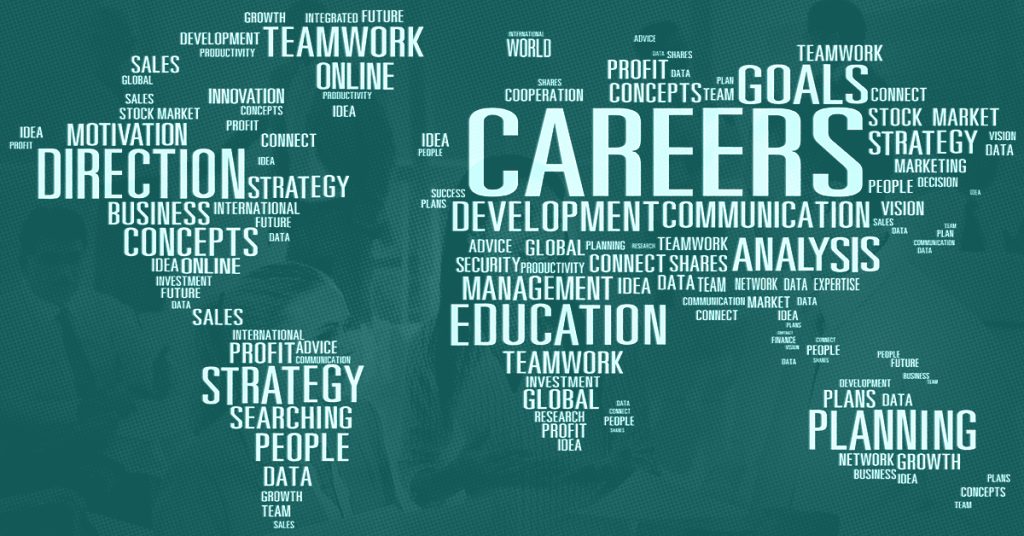
Case Studies
Real-world case studies provide compelling evidence of Artificial Intelligence (AI) ‘s transformative impact on the graphic design landscape. These studies offer insights into how industries across various sectors have embraced AI-driven graphic design tools, resulting in enhanced creativity, improved efficiency, and tangible positive outcomes.
Examining instances where AI has been successfully integrated into design processes reveals AI tools’ versatility and ability to address specific challenges within different industries. From advertising campaigns to educational materials, these case studies showcase the adaptability of AI in meeting the evolving demands of the design world.
The impact extends beyond individual projects, demonstrating a paradigm shift in industry practices and a redefinition of what is achievable through the collaborative efforts of AI and human designers.
Real-World Examples of AI in Graphic Design
Several industries have embraced AI in graphic design, reaping the benefits of enhanced creativity and efficiency. Case studies demonstrate how AI has become a game-changer, influencing industry practices and outcomes.
Impact on Industry and Outcomes
The impact of AI on graphic design extends beyond individual projects. Industries that have embraced AI report increased productivity, cost-effectiveness, and a heightened ability to meet evolving design expectations.
Training and Skill Development
As Artificial Intelligence (AI) becomes an integral part of graphic design, the importance of training and skill development for designers cannot be overstated. Adapting to integrating AI tools requires a proactive approach, where designers must stay updated on the latest advancements in AI-driven design technologies.
Embracing change becomes a cornerstone of professional growth as the industry evolves to harness the full potential of AI. Designers are encouraged to participate in training programs that offer insights into the functionalities of AI tools, ensuring they can leverage these technologies effectively within their creative processes.
The future demands a holistic skill set that combines traditional design acumen with proficiency in AI tools, allowing designers to navigate the evolving landscape with confidence and creativity.
Importance of Adapting to AI
The evolving nature of design demands designers to adapt to AI tools. Embracing change and staying abreast of technological advancements is crucial for professionals in the field.
Skills Required for the Future
Designers must cultivate a blend of traditional design skills and proficiency in AI tools. The future demands a holistic skill set that combines creativity with technological expertise.
Industries Affected by AI in Graphic Design
As Artificial Intelligence (AI) becomes an integral part of graphic design, the importance of training and skill development for designers cannot be overstated. Adapting to integrating AI tools requires a proactive approach, where designers must stay updated on the latest advancements in AI-driven design technologies.
Embracing change becomes a cornerstone of professional growth as the industry evolves to harness the full potential of AI. Designers are encouraged to participate in training programs that offer insights into the functionalities of AI tools, ensuring they can leverage these technologies effectively within their creative processes.
The future demands a holistic skill set that combines traditional design acumen with proficiency in AI tools, allowing designers to navigate the evolving landscape with confidence and creativity.
Advertising and Marketing
AI’s impact on advertising and marketing is profound, optimizing campaigns and creating visually appealing content tailored to target audiences.
Entertainment and Gaming
AI creates immersive and visually stunning experiences in the entertainment and gaming industries, enhancing user engagement.
Education and E-learning
The educational sector benefits from AI in graphic design by creating interactive and engaging learning materials, fostering a dynamic learning environment.
AI’s Influence on Visual Aesthetics
Artificial Intelligence (AI) is exerting a profound influence on the visual aesthetics of graphic design, reshaping traditional norms and propelling the industry into a new era of creative expression. Integrating AI algorithms in design processes is pivotal in shaping contemporary visual trends.
From generating unique patterns to suggesting colour palettes, AI creates visuals that transcend conventional boundaries. The technology follows existing aesthetics and can redefine them, encouraging designers to explore unconventional and experimental approaches.
As AI becomes an indispensable tool for designers, its impact on visual aesthetics extends beyond mere assistance, actively influencing and redefining the artistic boundaries of graphic design.
Shaping Design Trends
AI is pivotal in shaping visual aesthetics and influencing design trends that resonate with contemporary sensibilities.
Redefining Artistic Boundaries
Integrating AI in design challenges traditional artistic boundaries, encouraging designers to explore unconventional and experimental approaches.
Addressing Misconceptions
In the landscape of Artificial Intelligence (AI) in graphic design, it’s imperative to confront and dispel common misconceptions to foster a more informed perspective. A prevalent myth suggests that AI is poised to replace human creativity entirely, overshadowing the role of designers.
However, it is crucial to clarify that AI functions as a powerful ally, augmenting and complementing human creativity rather than rendering it obsolete. By addressing these misconceptions, the narrative shifts towards a more accurate understanding of AI as a tool that empowers designers, streamlines processes and unlocks new realms of creative potential.
Embracing AI as a collaborative force ensures that the future of graphic design is shaped by a harmonious integration of human ingenuity and artificial intelligence, offering a transformative synergy that propels the industry forward.
Common Myths About AI in Graphic Design
Dispelling common myths surrounding AI in graphic design is essential for fostering a better understanding of its capabilities and limitations.
Clarifications and Facts
Separating fact from fiction ensures that designers and stakeholders make informed decisions about integrating AI into their creative processes.
Future Job Trends
The graphic design industry is experiencing a remarkable transformation thanks to artificial intelligence (AI) integration. This technological innovation is opening up new and exciting job prospects in design. From AI design specialists to ethical AI consultants, the industry now welcomes professionals with dual proficiency in traditional design principles and AI tools.
This shift in job trends signifies not only the expansion of opportunities but also the need for designers to stay ahead of the curve by acquiring the necessary skills demanded by an AI-dominated design sphere.
More is needed to rely solely on creativity to excel in graphic design. The future job market will require professionals to be adaptable to technological advancements and deeply understand AI functionalities. This is an exciting time for designers with both traditional design skills and proficiency in AI tools. By embracing this transformation, they stand to benefit from a wealth of new opportunities and a dynamic industry that promises to be constantly enriched by the limitless capabilities of AI.
New Roles and Opportunities
The evolution of AI in graphic design creates new roles and opportunities for professionals, from AI design specialists to ethical AI consultants.
Skill Sets in Demand
As the industry evolves, specific skill sets become in demand, including proficiency in AI tools, adaptability, and a keen understanding of design principles.
Ethical Considerations
Amidst the integration of Artificial Intelligence (AI) into graphic design, ethical considerations play a pivotal role in shaping the responsible use of this transformative technology. Ensuring fair and unbiased AI algorithms is paramount to prevent the perpetuation of societal biases in design outputs.
Ethical guidelines must be established to address concerns about AI’s impact on job displacement and the potential concentration of creative power. Additionally, fostering inclusivity and diversity in AI-driven design processes is essential, ensuring the technology reflects a broad range of perspectives.
Striking a balance between leveraging AI for efficiency and maintaining ethical standards is imperative, guaranteeing that the future of graphic design is innovative, socially responsible, and accessible to all.
Responsible AI Use in Design
Ensuring responsible AI use in design involves setting ethical guidelines and actively addressing biases to create a fair and inclusive design environment.
Ensuring Inclusivity and Diversity
AI in graphic design must be implemented with a commitment to inclusivity and diversity, avoiding the perpetuation of biases and stereotypes.
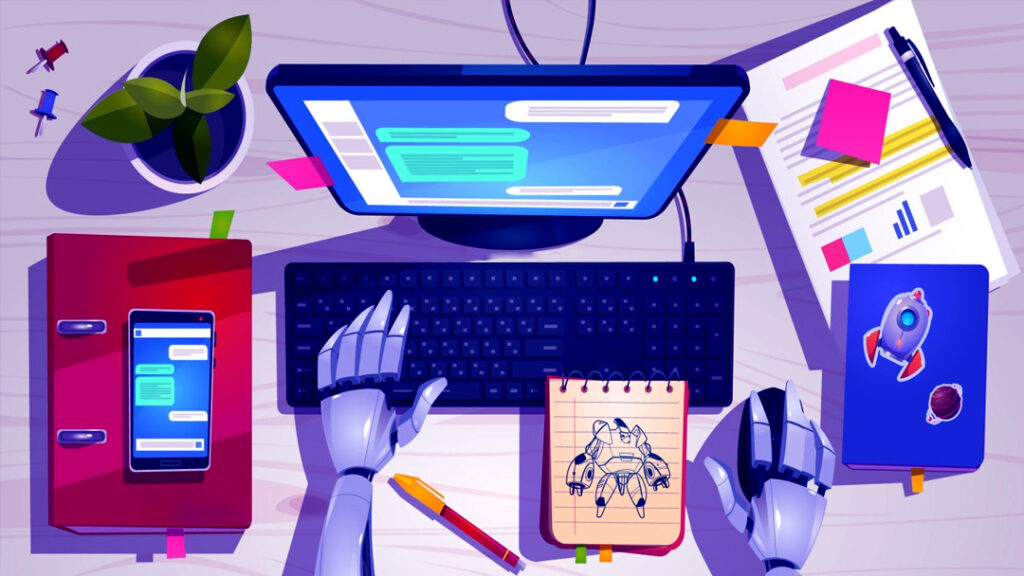
Conclusion
In conclusion, the marriage of artificial intelligence and graphic design heralds a future of unprecedented creativity and efficiency. Embracing the symbiotic relationship between AI and human designers opens up new possibilities and propels the industry into uncharted territories.
Frequently Asked Questions
Can AI replace human creativity in graphic design? While AI enhances creativity, human intuition and expression remain irreplaceable in design.
What are the key challenges in adopting AI in graphic design? Challenges include job displacement concerns, ethical considerations, and balancing human and AI input.
How can designers adapt to the integration of AI in their workflow? Designers can adapt by staying updated on AI tools, embracing change, and cultivating a diverse skill set.
What industries benefit the most from AI in graphic design? AI-driven graphic design significantly benefits the advertising, entertainment, and education industries.
What ethical considerations should be prioritized when using AI in design? Prioritize responsible AI use, address biases, and ensure inclusivity and diversity in design processes.

